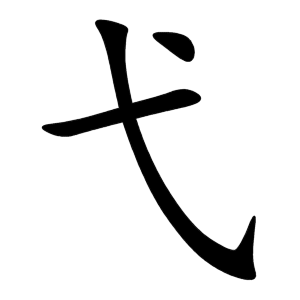Stroke Order
Japanese characters are composed of strokes. Each character is intended to be written in a certain order. This may seem complex and counterintuitive at times, but it is very important to learn. Learning the correct stroke order helps you intuitively know how to write new characters and believe it or not, knowing a character's stroke order has a big effect on how readable it ends up looking.
Skritter teaches you proper stroke order by ignoring strokes that are significantly out of order, thereby encouraging you to write correctly. In Japanese there is one stroke order standard, but slight variation in individual style is often supported. These are the stroke order rules for Japanese characters. The stroke order rules for Chinese characters are slightly different.

Write top to bottom, left to right
A clear example of this rule is the character 一, meaning one, which is written as one stroke from left to right. The character for the number two, 二, is written with the top stroke first, from left to right, and then the bottom stroke. You'll be able to guess the stroke order for the number three, 三.
Click to see the stroke animations: 一, 二, 三, 工, 言
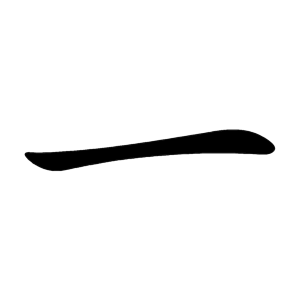

Horizontal strokes first
When a horizontal and vertical line cross, the horizontal is usually written first. Take a look at the character for the number ten, 十. It is written with a horizontal stroke, then a vertical.
Click to see the stroke animations: 十, 七, 干, 毛
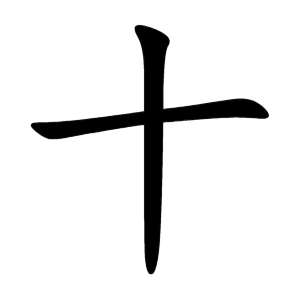

Middle before sides
If a character has a central element, and some minor components on the sides, then the middle part is written first. For example, in the character for water, 水, the center stroke comes before the others.
Click to see the stroke animations: 小, 水, 木, 赤
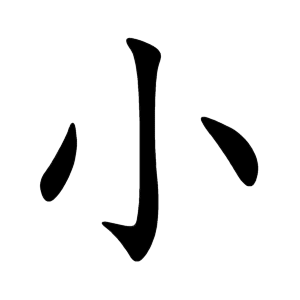

Boxes start from the left side
Boxes like 口 are written with three strokes. First, the left side, then the top and right (as one stroke), with the bottom line last. If a box is enclosing something within it, you draw the first two strokes of the box first, then the stuff inside, then the final closing stroke. The same rules apply for enclosures that are like incomplete boxes.
Click to see the stroke animations: 口, 四, 回, 高, 用
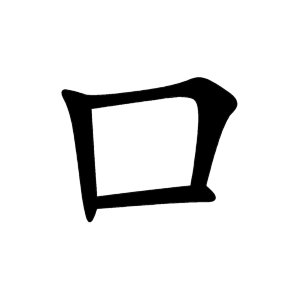

Down-left slashes first
When two slanting strokes either intersect or touch each other, the down-left one is written first.
Click to see the stroke animations: 父, 又, 人, 金
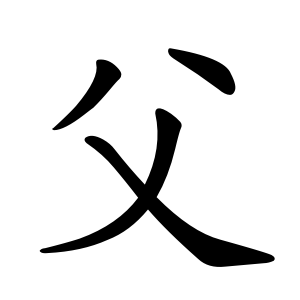

Cutting strokes last
Strokes that "cut" through or intersect a character are generally written after the strokes they intersect. For instance, the character for middle 中 (なか) has the box drawn first, followed by the cutting stroke.
Click to see the stroke animations: 中, 年, 手, 母, 舟
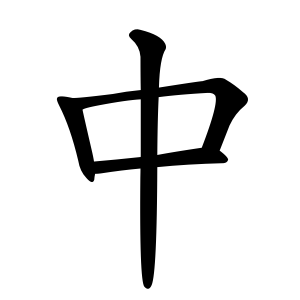

Horizontal stroke with a slash through it
When a horizontal line and a down-left slash just touch each other, like in 反 or 圧, the horizontal stroke is written first. You'd think that when these lines intersected, the same thing would happen. This is in fact true for some characters, like 左, 在 and 友. But, for historical reasons, 右, 有 and 布 have the down-left slash first! We think this is pretty silly, and nobody will beat you up if you get it wrong. Skritter is also forgiving of these mistakes during practice.
Click to see the stroke animations: 在, 有


Horizontal-vertical crossings are tricky
Normal horizontal-vertical crossings, like 十, have the horizontal stroke first. However, two characters and their many extensions defy this rule. They are 田 and 王, and in both of them you draw the vertical stroke first, followed by two horizontal strokes.
Click to see the stroke animations: 田, 生, 国, 麦
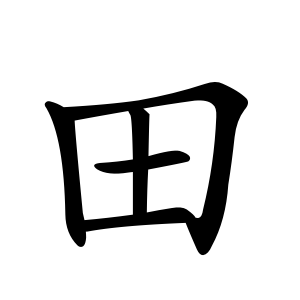

Dots and minor strokes come last
When a character has a dot in an awkward place, the dot is written last, even though it may be vertically higher than other strokes.
Click to see the stroke animations: 弋, 戈, 就
